Quick Stats (2025)
- School Type: Special education school
- Grades: 7-12
- Source: National Center for Education Statistics (NCES), UT Dept. of Education
School Overview
School Type
Grades Offered
Grades 7-12
Total Students (11-12)
135 students
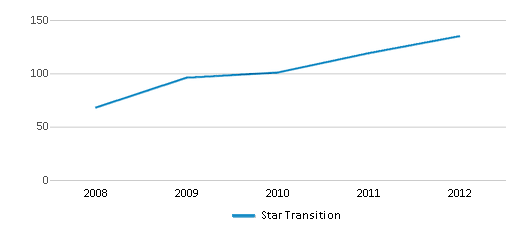
Total Classroom Teachers (22-23)
18 teachers
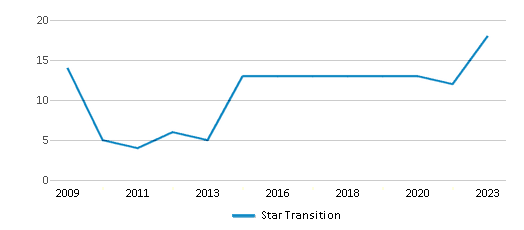
School Rankings
Student : Teacher Ratio
n/a
21:1
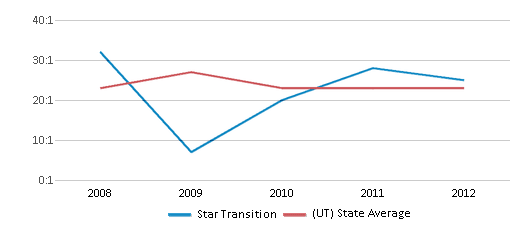
American Indian
(11-12)1%
1%
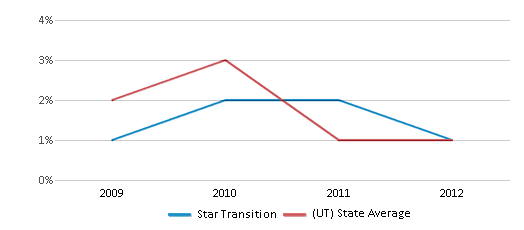
Asian
(11-12)n/a
2%
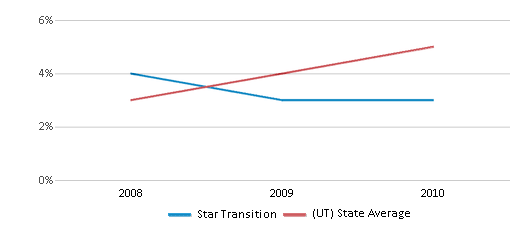
Hispanic
(11-12)9%
15%
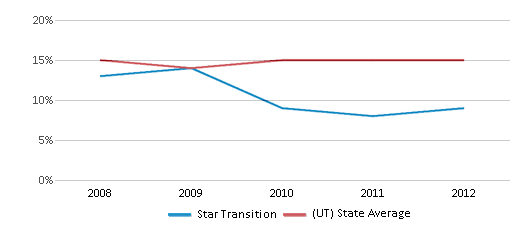
Black
(11-12)4%
1%
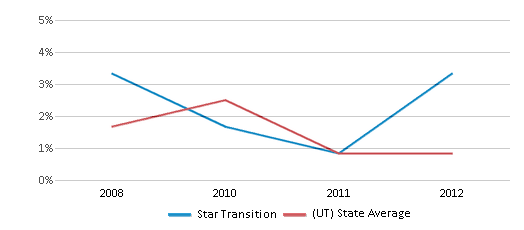
White
(11-12)84%
78%
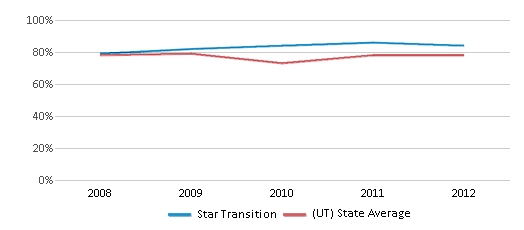
Hawaiian
(11-12)1%
2%
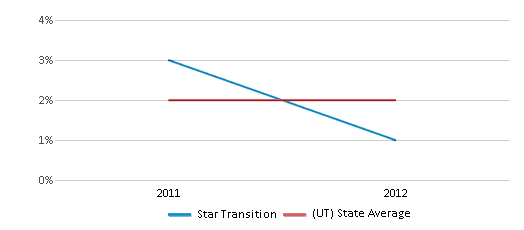
Two or more races
(11-12)1%
1%
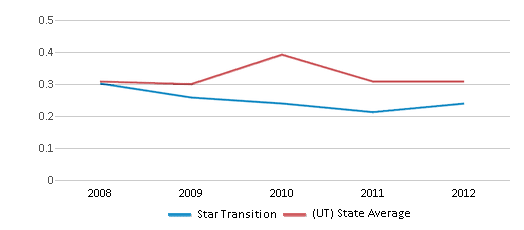
Eligible for Free Lunch (11-12)
96%
37%
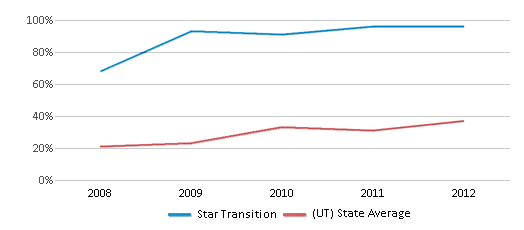
Eligible for Reduced Lunch (11-12)
1%
11%
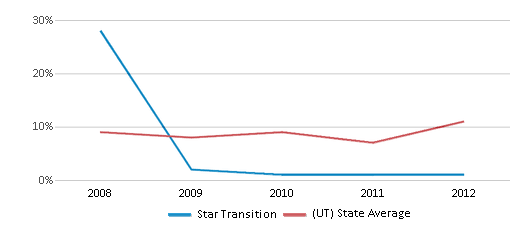
School Statewide Testing
School District Name
Source: National Center for Education Statistics (NCES), UT Dept. of Education
Profile last updated: 02/09/2025
Frequently Asked Questions
What schools are Star Transition often compared to?
Star Transitionis often viewed alongside schools like Utah Career Path High School by visitors of our site.
How many students attend Star Transition?
135 students attend Star Transition.
What is the racial composition of the student body?
84% of Star Transition students are White, 9% of students are Hispanic, 4% of students are Black, 1% of students are American Indian, 1% of students are Hawaiian, and 1% of students are Two or more races.
What grades does Star Transition offer ?
Star Transition offers enrollment in grades 7-12
What school district is Star Transition part of?
Star Transition is part of Davis School District.
School Reviews
Review Star Transition. Reviews should be a few sentences in length. Please include any comments on:
- Quality of academic programs, teachers, and facilities
- Availability of music, art, sports and other extracurricular activities
Recent Articles

What Is A Charter School?
Explore the world of charter schools in this comprehensive guide. Learn about their history, how they operate, and the pros and cons of this educational innovation. Discover key facts about charter schools, including admission policies, demographics, and funding, as well as what to look for when considering a charter school for your child.

10 Reasons Why High School Sports Benefit Students
Discover the 10 compelling reasons why high school sports are beneficial for students. This comprehensive article explores how athletics enhance academic performance, foster personal growth, and develop crucial life skills. From improved fitness and time management to leadership development and community representation, learn why participating in high school sports can be a game-changer for students' overall success and well-being.

February 05, 2025
Understanding the U.S. Department of Education: Structure, Impact, and EvolutionWe explore how the Department of Education shapes American education, from its cabinet-level leadership to its impact on millions of students, written for general audiences seeking clarity on this vital institution.



![feel free to ask any questions/requests in the comments 🧷🎧 music: Drama -Aespa
🎙️ idol: Ningning [Aespa]
📓 ig: @/kh1num
🥛 tikTok: @/kh1numthank you for watching ! 🍚 Capcut Star Transition Tutorial | Star Transition Tutorial | Capcut Tutorial | Kpop Edit](https://i.ytimg.com/vi/voYAf_J85qU/0.jpg)





